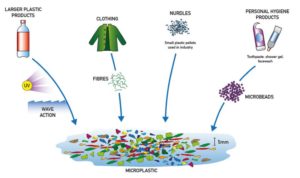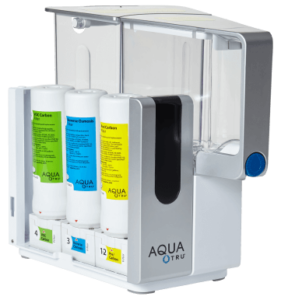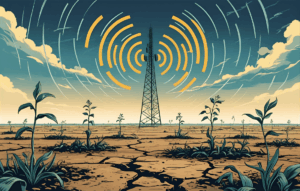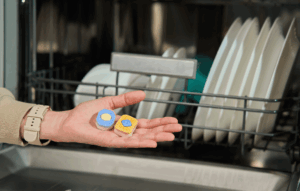Last month, I opened many of your eyes to the unsettling reality of microplastics infiltrating our bodies in my article Microplastics Found in Human Testicles and Placenta. We explored how these tiny particles have made their way into our reproductive systems, raising serious concerns about their impact on fertility and maternal health. Today, let’s continue that conversation by diving deeper into where these microplastics come from, how they sneak into our bodies, and what we can do to minimize their effects.
Microplastics in the Environment
Microplastics have infiltrated every nook and cranny of our planet, from the deepest oceans to the highest peaks. They’re in our soil, water, and air, making them virtually impossible to escape. Our rampant use of plastic in everyday products, coupled with inefficient waste management systems, has led to this global contamination. As these plastics degrade into smaller particles, they persist in the environment, entering the food chain and accumulating in living organisms.
If you thought you could escape microplastics by trekking to the highest point on Earth, think again. Mount Everest, once considered a pristine and remote location, isn’t safe from plastic pollution. In a recent study, scientists found microplastics scattered all over Everest, with the highest concentration—119 particles per quart of water—around Everest Base Camp, where climbers rest and acclimatize. The study’s lead author, marine scientist Imogen Napper, was shocked at finding microplastics in every snow sample collected. This starkly highlights how pervasive and insidious these tiny pollutants are.
Some Sources of Microplastics
Microplastics have invaded every aspect of our daily lives, sneaking into our environment from a variety of sources. Here are some of the major contributors:
Clothing Materials: Synthetic fabrics like polyester, nylon, and acrylic shed microfibers during washing. These tiny fibers are too small to be filtered out by wastewater treatment plants and eventually make their way into rivers, lakes, and oceans. Each wash can release thousands of microfibers, adding significantly to the microplastic load in the environment.
Plastic Cutting Boards: Every time you chop, slice, or dice on a plastic cutting board, tiny plastic particles are shaved off and end up in your food. These particles are so small they’re often invisible to the naked eye but accumulate over time, contributing to the microplastic pollution in your meals.
Food Packaging: Plastic food packaging is another major source of microplastics. As these materials degrade over time, they release tiny plastic particles that can contaminate the food they’re meant to protect. This is especially common with processed and packaged foods, where the packaging can leach microplastics into the product.
Land Disposal: Discarded plastics from land-based activities contribute significantly to microplastic pollution. As larger plastic items break down, they release microplastic particles into the soil and water.
Wastewater Treatment: Microplastics from personal care products and household waste often bypass treatment systems, making their way into our water bodies.
Tire Wear: Abrasion from vehicle tires releases synthetic rubber particles, which are washed off roads by rainwater and enter waterways.
Paint Failure: Degradation of paints on buildings and ships adds to microplastic pollution, with tiny paint particles flaking off and entering the environment.
At-Sea Losses: Direct dumping and accidents at sea release vast amounts of plastic, which eventually break down into microplastics.
These sources highlight the pervasive nature of microplastics and the need for comprehensive strategies to reduce their release into the environment.
Microplastics and Human Health
In my previous article on microplastics, I discussed alarming findings about microplastics infiltrating our reproductive systems. These studies raised significant concerns about potential impacts on fertility and maternal health. Today, let’s expand on this topic by highlighting additional health implications and providing further insights from recent research.
Impact on Reproductive Health
As previously discussed, a study published in Toxicological Sciences found significant levels of microplastics in both canine and human testes, with potential associations between specific polymers and adverse effects on reproductive health. Researchers identified 12 types of microplastics, suggesting that these tiny particles could contribute to declining sperm counts and other reproductive issues.
Microplastics in Women’s Placentas
The discovery of microplastics in every tested human placenta, with concentrations much higher than those found in the bloodstream, underscores the pervasive nature of these pollutants. Researchers using high-resolution techniques found that over half of these plastics were polyethylene, a common plastic used in single-use bags and bottles.
Broader Health Implications
While reproductive health is a critical area of concern, microplastics are also being found in other vital organs. Recent studies have detected microplastics in the lungs, liver, and kidneys, indicating that these particles can penetrate biological barriers and accumulate in various tissues. This accumulation can lead to inflammation, oxidative stress, and other cellular damage.
Potential Links to Chronic Diseases
Emerging research suggests potential links between microplastic exposure and chronic diseases. Some studies have found associations with respiratory issues, gastrointestinal disorders, and even cancer. For instance, inhalation of airborne microplastics may contribute to respiratory problems, while ingestion through contaminated food and water could affect the digestive system.
Children’s Health
Children are particularly vulnerable to the effects of environmental toxins, including microplastics. Their developing bodies and organs are more susceptible to damage, and they have higher exposure levels relative to their body weight. Ingesting microplastics through food and water, or inhaling them from the air, could have long-term health consequences for children, potentially impacting growth, development, and overall health.
Additional Insights and Resources
- Endocrine Disruption: Microplastics can carry endocrine-disrupting chemicals that interfere with hormone function, potentially leading to developmental, reproductive, neurological, and immune issues.
- Immune System Effects: Studies suggest that microplastics can trigger immune responses, leading to chronic inflammation and other immune system dysfunctions.
- Oxidative Stress: The presence of microplastics in cells can cause oxidative stress, which damages cells and is linked to various diseases, including cancer.
By understanding these broader health implications, we can better appreciate the urgency of addressing microplastic pollution and mitigating its impact on our health.
Microplastics: Sources and Formation
To fully understand the issue of microplastics, it’s essential to know their origins and how they enter the environment. Society’s reliance on plastics has grown since commercial production began around 1950. Plastics’ versatility, stability, lightweight, and low production costs have driven global demand, resulting in widespread use and disposal.
- Primary Microplastics: Intentionally manufactured, such as microbeads in personal care products and industrial abrasives. Despite regulations like the Microbeads-Free Waters Act of 2015 in the U.S., microbeads still exist in non-rinse-off products and industrial applications.
- Secondary Microplastics: Result from the fragmentation of larger plastics during use or disposal. These include particles from tire wear, degraded paints, and synthetic fibers released during washing. Environmental conditions like UV exposure, friction, and temperature can accelerate this breakdown.
Global Transport and Distribution

Microplastics are distributed globally through various pathways:
- Rivers: Transport plastics from land to sea.
- Atmospheric Transport: Disperses microplastics through the air.
- Stormwater Runoff: Carries debris into waterways.
In aquatic environments, microplastics undergo weathering, biofouling, and aggregation, leading to their eventual sinking and accumulation in sediments. The biofouling process involves colonizing microplastic surfaces by microorganisms, which can cause buoyant plastics to sink.
Ecological and Health Effects
Microplastics pose significant risks to marine life and ecosystems. They are ingested by various organisms, from plankton to whales, potentially compromising feeding, metabolism, reproduction, and behavior. The smaller the particles, the more likely they are to penetrate cell membranes and tissues, exacerbating health risks.
Microplastics can also absorb and concentrate environmental contaminants, such as persistent organic pollutants (POPs), heavy metals, and pathogens, further increasing their toxicity.
Human Exposure and Health Risks
Human exposure to microplastics occurs through multiple routes:
- Ingestion: Consuming contaminated food and water.
- Inhalation: Breathing in airborne microplastics.
- Dermal Contact: Skin exposure to products containing microplastics.
The health effects of microplastic exposure are not fully understood, but studies suggest major risks, including inflammation, oxidative stress, cellular damage, endocrine disruption, and more. There is also concern about microplastics disrupting endocrine functions and contributing to cancer.
Indoor Microplastics
Microplastics are prevalent indoors, where people spend over 90% of their time. Indoor sources include synthetic textiles, household dust, and consumer products such as plastic cutting boards. The abundance of polymeric products indoors magnifies the risks associated with microplastic exposure.
Addressing the Microplastic Problem
Mitigating exposure to microplastics is a prime example of how I’ve built my lifestyle by voting with my dollar. I avoid big agricultural, pharmaceutical, and clothing companies that cut corners and jeopardize long-term health for profit. Here’s how I actively choose healthier and more sustainable options:
Local, Organic Produce and Grassfed Beef
I choose to spend more at my local market for organic produce and grass-fed beef because I value farmers who prioritize quality and sustainability. These farmers use organic soil, purified water, and regenerative practices, cutting down on the plastic waste associated with industrial farming. Some might call it “bougie,” but I’d rather support a local farmer who goes the extra mile than buy produce from a megacorp that ships it around the world with who knows what inside.
Natural Fiber Clothing
I avoid polyester clothing at all costs and constantly seek brands that use organic cotton, wool, alpaca, and other natural fibers. This choice reduces the microplastic fibers that synthetic fabrics release into the environment.
High-Quality Supplements
I don’t buy supplements from cheap brands that mass-produce in other countries, filling capsules with microplastics, heavy metals, and fillers. Instead, I opt for high-quality, organic supplements and superfoods that prioritize purity and efficacy.
Advanced Water Purification
I have a top-of-the-line reverse osmosis water purification system that is countertop, so we have used it for three years now and it works great. This ensures we drink water free from microplastics and other contaminants. For more on water purification visit my article visit my comprehensive drinking water article.
Supporting Ethical Companies
I vote with my dollar and support those who are aware of the same health hazards that mostly go unnoticed and build companies around providing solutions to those problems. Whether through sustainable farming, eco-friendly clothing, or clean supplements, supporting these businesses helps promote a healthier lifestyle and environment.
Keeping Detox Pathways Open
Despite our best efforts, we will be exposed to toxins no matter what. However, humans are resilient and can heal and rid our bodies of microplastics, pesticides, glyphosate, mold, and other toxins, but we must give ourselves a fighting chance by living a healthy lifestyle year-round. Here are some ways to keep our detox pathways flowing:
- Sweat from Sauna: Regular sauna sessions help eliminate toxins through sweat.
- Lymphatic Flow and Drainage: Engaging in activities like dry brushing, exercise, and massage can stimulate lymphatic flow and drainage.
- Healthy Liver: Supporting liver health with a balanced diet, hydration, and avoiding excessive alcohol intake ensures efficient detoxification.
- Cleansing the Colon: Regular bowel movements and colon cleansing practices help remove waste and toxins from the body.
Conclusion
Microplastics are a pervasive environmental pollutant with health implications that are only beginning to be understood. By understanding the main causes and pathways of microplastic ingestion, we can make informed choices to reduce our exposure and advocate for broader changes to address this global issue. By voting with our dollars, supporting ethical companies, and keeping our detox pathways open through a holistic lifestyle, we can build a healthier future for ourselves and our planet.












